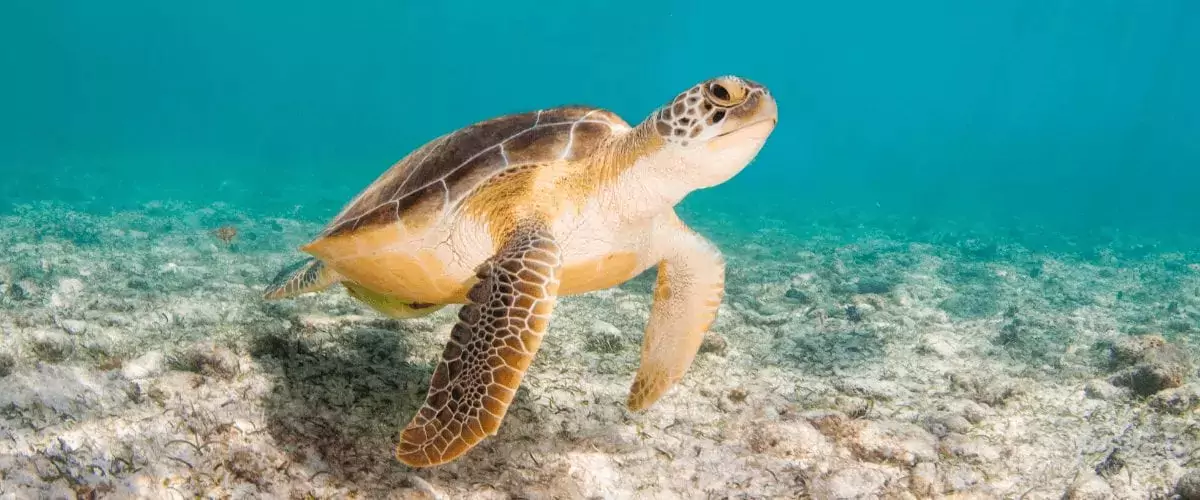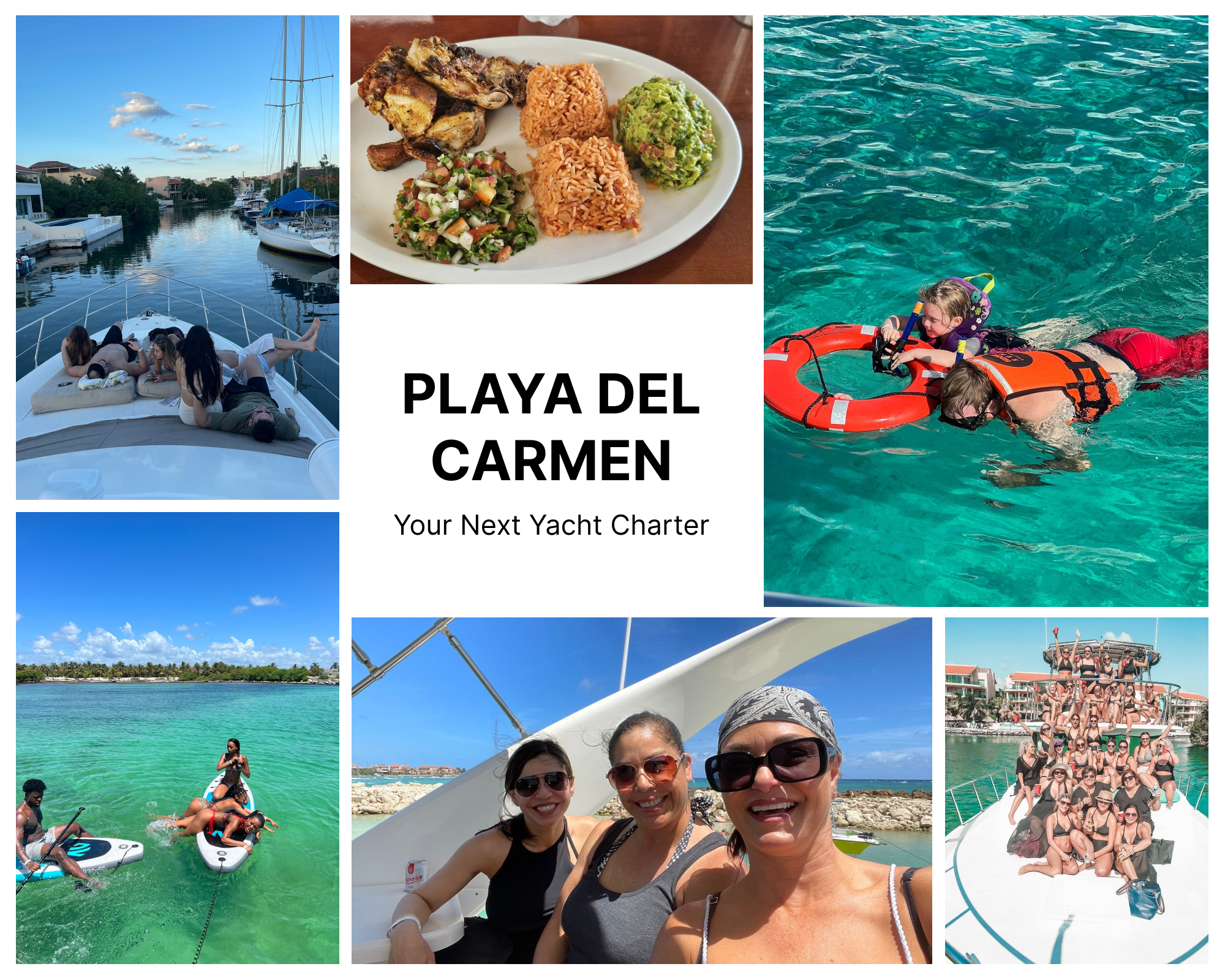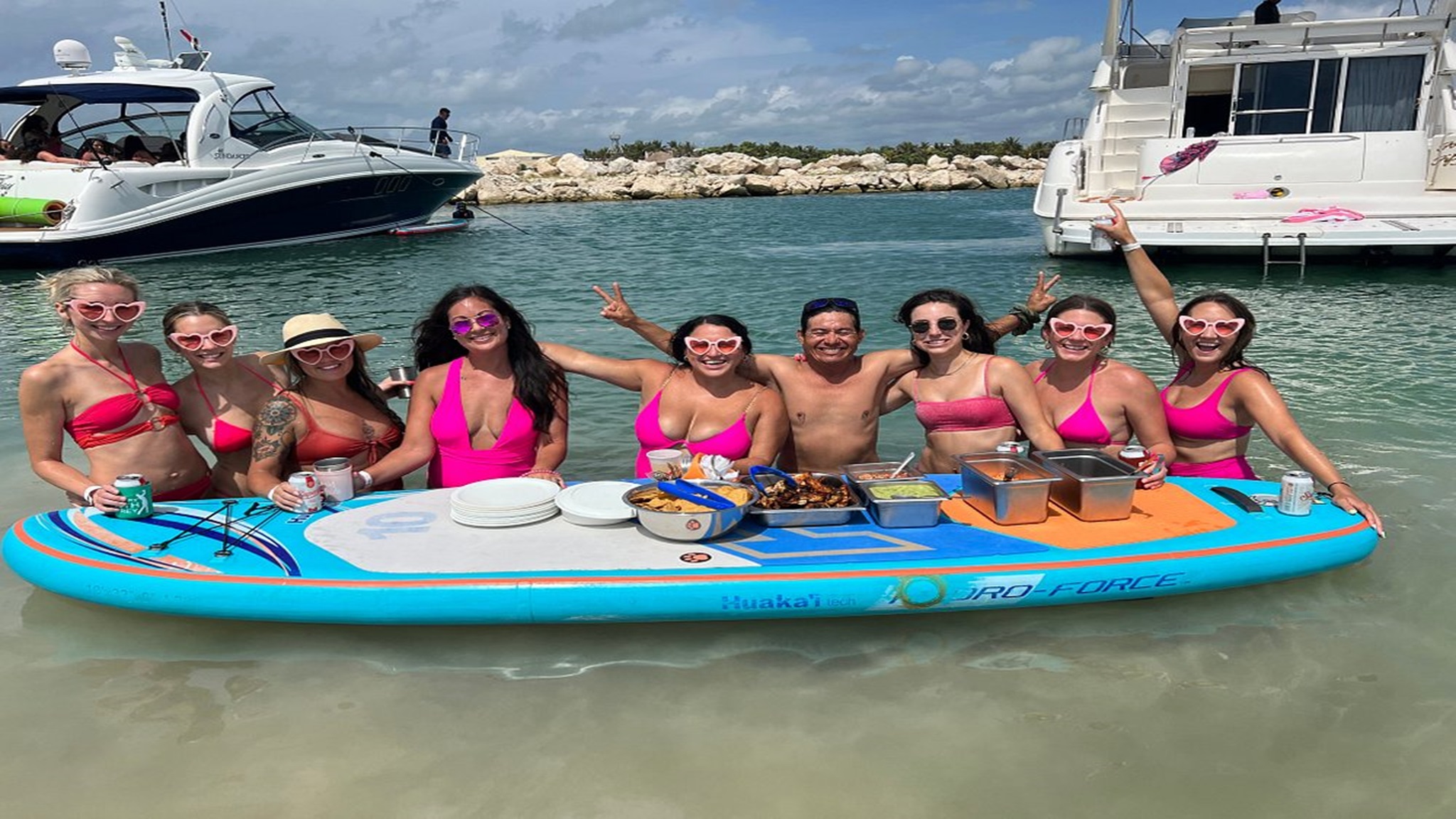WHAT TO KNOW ABOUT SEA TURTLES IN THE RIVIERA MAYA
Swimming with sea turtles is a magical experience that will no doubt stay with you for life.
I’ll never forget the first time I swam alongside a green turtle.
It’s an activity that every snorkeler dreams of!
At H2oh Sun Cruises, naturally, we often come face to face with these majestical creatures out at sea.
When sharing the magnificent wonders of the ocean with you, it’s extremely important that we all follow the rules in order to protect the reefs and treat the marine life with respect it deserves.
Remember – you’re on their turf now!
Your Sustainable Guide to Swimming with Sea Turtles
The Types of Sea Turtle in The Riviera Maya
Did you know there are 4 types of sea turtles known to visit this region (Quintana Roo)?
When snorkeling in the Riviera Maya the turtle you are most likely to come into contact with is either a Loggerhead or Green Sea Turtle, as they nest along the coasts of Cancun and the Riviera Maya.
1. Green Turtles
The Green/White Turtle is the only one of the 4 types of sea turtle in the Riviera Maya that has been caught sunbathing out of the water!
I know what you’re thinking “well, which one is it…green or white?”, well, that’s up for debate…
They were named the ‘green turtle’ because of the fat on their body looking a little ‘greenish’ underwater, but as hatchlings they are dark with white edges on their fins and bellies hence the name ‘white turtle’.
These beauties are oval in shape and tend to get flatter with age.
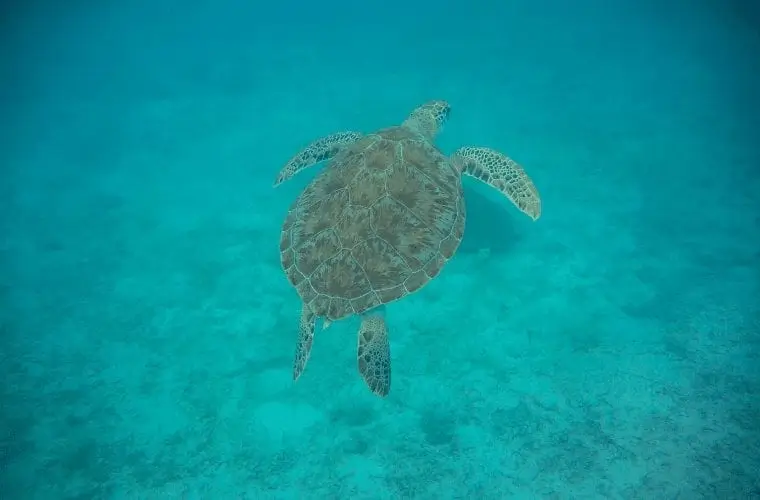
As juveniles the shell is a reddish-brown to olive-green color; as adults, they turn dark brown with patterns of spots and multi-tone rays, with a yellowish belly.
Length and weight can vary according to their location; in Mexico, they have been recorded between 28-55 inches long (the average is 37 inches), and their weight has been recorded between 150-518 lb.
The biggest on record in these parts? A whopping 870 lb!
The green turtle lives between coastal areas and the open sea.
When they are babies they live in the open sea, and the juveniles and adults in coral reefs, reef beds, marine grasslands (like the ones you find in Akumal), etc.
2. Loggerhead Turtle
The big heads of the bunch – literally!
Of the types of sea turtles with hard shells the Loggerhead is the largest.
You can recognize them because of their slightly heart-shaped shell and relatively large heads compared to the body.
Their shells are usually covered in barnacles and algae.
When they are young they have lighter and brighter colors dominating the reddish-brown. As adults they have a reddish-brown shell with tones of olive green.
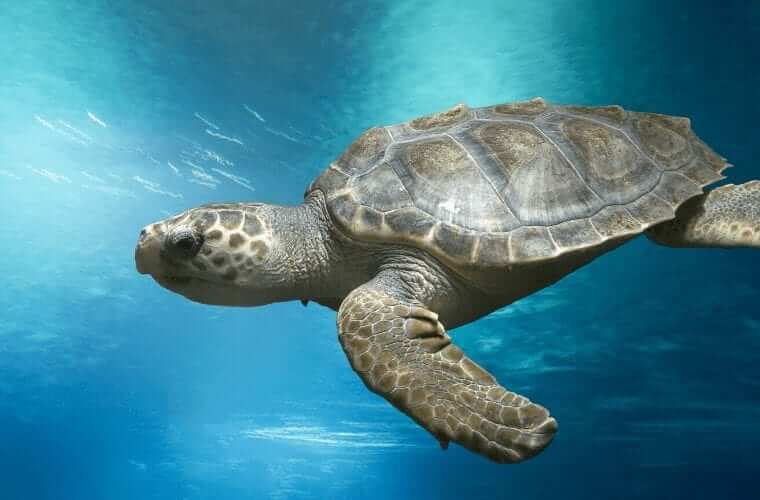
Data recorded for this species in Mexico indicate that its length is 29-41 inches, with an average of 36 inches, while the weight is between 145-236 kg, with an average of 176 kg.
They like to get around in the ocean…the record migratory route for this species is 4,828 km!
It can swim for more than 20 minutes on a dive, but the impressive thing is that, if it’ s at rest, it can last up to hours on the seabed! It is estimated that they can live up to 62 years in the wild, and 33 years have been recorded in captivity.
A Proctected Species
The sea turtle is one of the oldest species in existence today! Pretty amazing, right?
Their crazy long legacy stretches back 130 million years – at least!
They’re adaptable and resilient creatures that have survived both environmental and climate extremes.
Yet, today sadly, they’re close to extinction.
Why?
Humans and manmade problems.
You see, female turtles wait 30 years to lay their nest on the beaches.
So, when you see them so close to the beaches that is why they’re there, they’re getting ready to be a momma turtle.
If they feel threatened or distressed it can affect the natural process of turtles nesting.
From the time the baby turtles hatch they must use their tiny flippers to make their into the ocean, fighting for survival against predators such as crabs and seabirds.
After that they spend decades avoiding crashing into boats, getting strangled by bits of plastic, the list goes on…
Although they are tough and resilient creatures they are not immune to death.
Turtles are very sensitive creatures and while their shells are made of bone, the carapace (skin) is made of fused ribs and covered with a thin outer layer of keratin that can be easily lacerated or diseased by touch or impact.
While it might be impulsive to want to touch them and get as up close and personal as possible when you see them at H2oh we believe everyone has a role to protect them if we want them to recuperate their numbers and help them survive 2020 and beyond.
Here’s how you can help…
3. The Dos
Since seeing sea turtles in great pain with tumors I have been steadfast in communicating the importance of better swimming with sea turtle practices.
Both Marine biologists and scientists agree that swimming with alongside sea turtles can be sustainable when we go about it the right way…

Be as Quiet as You Possibly Can
Sea turtle’s are easily startled.
Be as none-threatening as possible.
When you’re in close proximity with a turtle minimize splashing and don’t scream and shout about it as loud noises will scare them away.
It’s an exciting to see but enjoy the moment for yourself and simply let the turtle pass on by and go about his business.
If you’re wearing flippers be sure point your feet downwards and use small smooth motions to stay afloat.
Approach Turtles From a Side View
Turtles are often just as fascinated by humans as humans are fascinated by them. You don’t have to chase them.
They’re more likely to come and check you out if you remain chill.
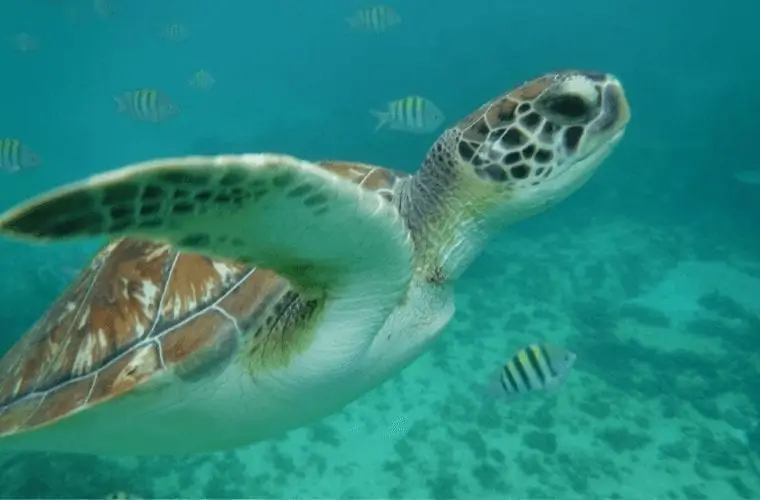
When snorkeling always approach them from the side. This way you avoid scaring them and they can decide if they want to stay or swim away.
Wear Biodegradable Sunscreen
The chemicals in normal sunscreen bleach the reefs and cause damage to the marine life and their biological cells.
Think about it…millions of people entering the sea are all wearing regular sunscreen which washes off in the ocean. Where do you think the remnants go?
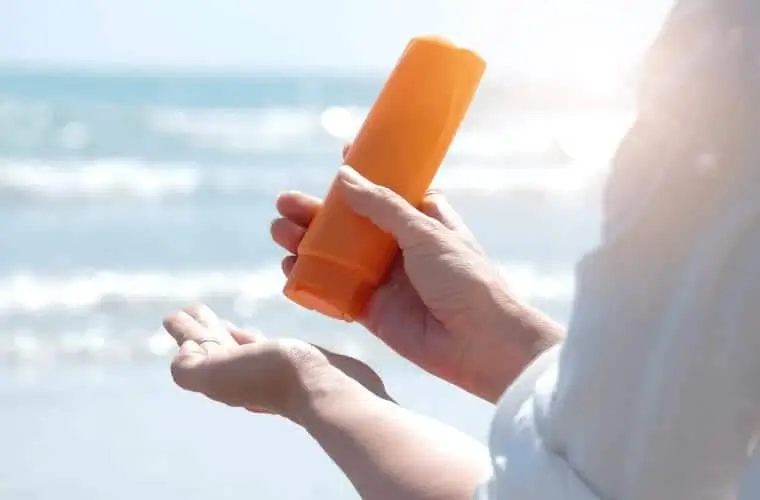
It’s estimated that TONS of sunscreen is dumped in the ocean each year.
Avoid being part of the problem if you have to wear sunscreen when snorkeling make sure it’s biodegradable. The regular stuff is packed with nasty chemicals that don’t agree with the marine life.
Take Home Litter Home With You
Trash can kill, especially when it is mistaken for food. Sea turtles sometimes swallow plastics, which they mistake for their favorite food item, jellyfish.
The world is suffering a huge plastic problem so please be extra careful on our yachts to make sure no straws, cups, balloons, or anything else ends up in the ocean.
Our guides and crew do are absolute best to make sure this doesn’t happen but please help us do our job by being environmentally-conscious too.
4. The Don’ts
Now for the absolute no-gos…
Don’t Hit Them With Your Flippers
If you’re wearing flippers be sure point your feet downwards when they are close and use small smooth motions to stay afloat.
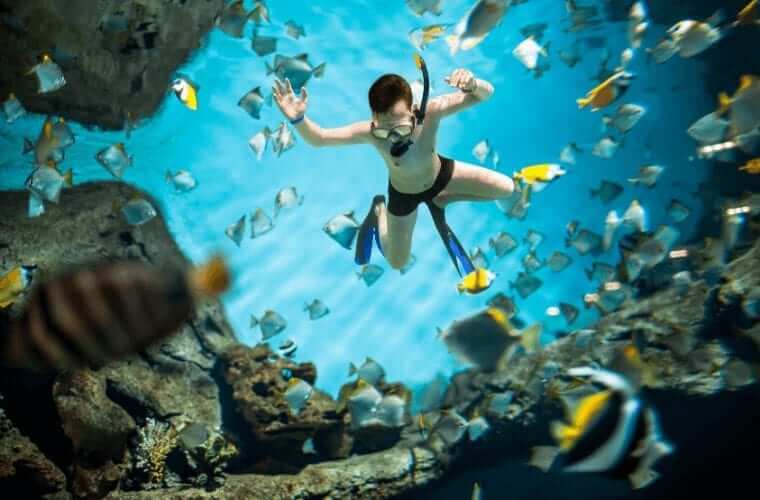
This is often a problem with children wearing flippers.
As parents, please educate your children on the dos and don’ts of swimming with sea turtles before you enter the water.
Don’t Harass The Sea Turtle
Let the sea turtle go about its natural business.
Although it might be tempting please don’t chase or try to take selfies with it.
Keep a minimum of 1.5 meters distance and move away if it shows signs of distress.
Do Not Touch The Turtle
This one may seem like a no-brainer but you’d be surprised how many people try to touch the turtles and aren’t aware of the dangers.
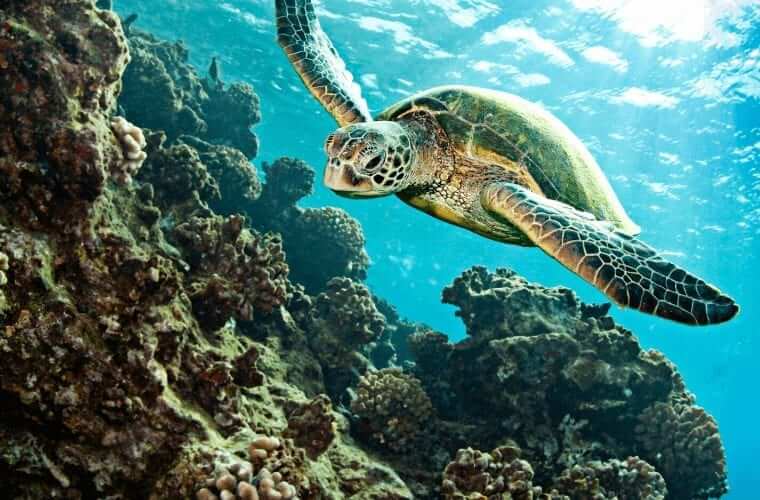
The turtle’s immune systems are not equipped to fight off any chemicals we might pass on by touch.
They can feel your touch and do not enjoy being petted, it scares them.
Don’t Feed The Turtles
Sea turtles are adapt to finding their own food.
Their digestive system is not designed to consume the food we might eat.
Please make sure you and your children do not feed the turtles as it’s not good for them and can end in fatality.
Plus, they have a strong bite if they accidentally get you.
5. The Signs of An Irritated Sea Turtle
At H2oh, we call this ‘being flipped off’, and it’s important to know what to look out for so you can back away slowly if you’re stressin’ a turtle out.
A sign of an irritated turtle is a “ flipper swipe”.
The turtle will swipe his flipper over his forehead area – in turtle-language it means “back off human.”
Don’t embarrass yourself by being flipped off by a turtle.
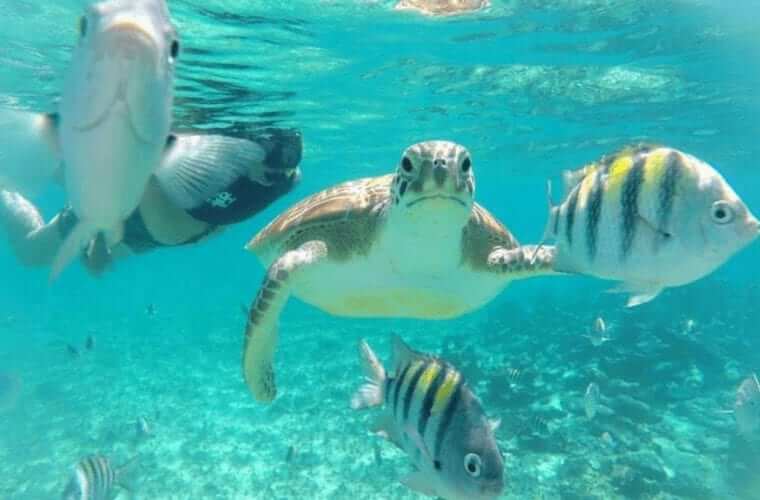
Back off slowly and calmly, if you see that flipper creep up. Pay attention to this subtle sign and be respectful of the comfort zone of the turtle.
How to Tell if You’re Being Flipped Off
- The turtle uses his flippers to show he is stressed. The turtle will move his flipper over the front of his face.
- “Yawning” with an open mouth
- Sudden awakening from a sleep-like state on the seafloor
- An increase in swimming speed
- Diving towards deeper water
Always remember: we are a guest in their home, DON’T be disrespectful to your turtle hosts.
6. Sea Turtle Sanctuaries & What You Can Do to Help
I’m constantly wowed by the efforts made by locals and tourists to make a difference in these parts of the world.
If you want to do your part to protect this incredible species there are a few other things you can do additional to simply following the rules of our snorkel tours.
La Tortuga Granja
La Tortuga Granja is a turtle farm located on Isla Mujeres just off the coast of Cancun (if you haven’t been before, I highly recommend this island – it’s stunning), and it’s a great spot the whole family can enjoy.
From May through September, giant Mexican sea turtles lay their eggs in the sands here.
In order to protect them, volunteers gather the eggs until they hatch, and are released into the wild by children in August, September and October.
There are also Mexican sea turtles who live at the Turtle Farm permanently.
Some of these are rare albino sea turtles who are in need of protection and special care.
There are also a variety of other fascinating species to encounter here, including iguanas, manta rays, tropical fish, and crabs.
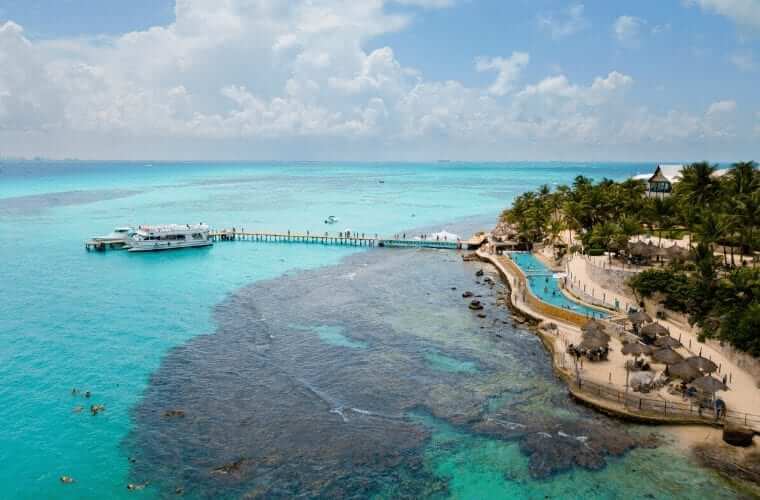
The admission at La Tortuga Granja is just $3 (30 Mexican pesos) – and every cent goes toward the conservation of Isla Mujeres’ incredible sea turtles.
Xcacel Beach
There’s also a more local option to the Riviera Maya called, Xcacel Beach.
The local association in charge of protecting the species, Flora, Fauna & Culture, cordon off the area to ensure that no one steps over the buried sea turtle nests. Biologists will patrol the beach, ensuring the safety of any sea turtle that beaches to deposit her eggs.
Flora, Fauna & Culture offers an educational program called “Get to Know a Turtle Camp.”
Volunteers to the program can visit Xcacel and learn all about the conservation efforts being done to protect the sea turtles.
This is a great opportunity for nature lovers, kids, and the curious to develop a better understanding of the plight faced by sea turtles and the need to protect these endangered species.
There is a fixed donation price of $25 USD to participate in the program. Those interested can send an email to Juan Jose at [email protected].
7. Snorkel Tours at H2oh Sun Cruises
Now we got all the important stuff out the way, who is ready to swim with sea turtles and have some fun?
At H2oh Sun Cruises we were rated #1 in the Riviera Maya and awarded the Certificate of Excellence by TripAdvisor for the 6th year in a row!
Can I get a hell yeah!?
We offer 6 fun-fuelled private yacht charters to choose from…
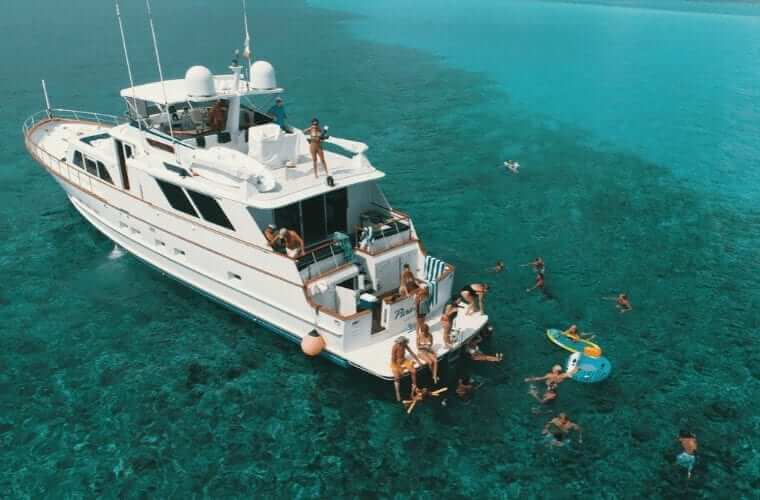
Our most celebrated tour is the Inha Reef 4-hour snorkel tour starting at just $1299 USD for 15 people.
So, round up your pals and let’s go have a blast from just $86 USD per person.
You’ll get to relax aboard your own all-inclusive private yacht charter ranging from 47′ – 80′ in length.
Indulge in the open bar, snorkel, dance, or top up your tan.
You’ll have the freedom to go at your own pace, and it’s likely (though not guaranteed) you will see some sea turtles.
8. Book Today
If you liked this blog and you want to speed the word about sustainable tourism be sure to share it with your turtle lovin’ friends on Facebook.
If you have any questions or comments feel free to drop them down below, I’d love to hear from you.
If you’d like to save on your private yacht charter tour book directly and in advance with us our privately-owned fleet awaits…!
We’re here to help you get organized.
Visit or website or contact us directly at [email protected], alternatively, if you prefer to speak to a human our number is (800) 530-9194 we’re only a phone call away.
See you soon!

